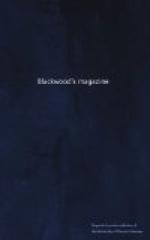He was the first to write in the spoken language of his country, and, in conjunction with his two contemporaries, Soumarokoff and Kheraskoff, he laid the foundations of the Russian literature.
Of the other two names we have mentioned as entitled to share the reverence due from every Russian to the fathers of his country’s letters, it will be sufficient to remark, that Soumarokoff was the first to introduce tragedy and opera, and Kheraskoff, the author of two epic poems which we omit to particularize, as not coming within our present scope, wrote a work entitled “Cadmus and Harmonia,” which may be considered as the first romance. It is a narrative and metaphysical work, which we should class as a “prose poem;” the style being considerably elevated above the tone of the “Musa pedestris.”
The name of Emin comes next in historical, though not literary, importance: though the greater part of his productions consists of translations, particularly of those shorter pieces of prose fiction called by the Italians “novelle,” he was the author of a few original pieces, now but little read; his style bears the marks, like that of Kheraskoff, of heaviness, stiffness, and want of finish.
The reputation of Karamzin is too widely spread throughout Europe to render necessary more than a passing remark as to the additions made by him to the literature of his country in the department of fiction: he commenced a romance, of which he only lived to finish a few of the first chapters.
Narejniy was the first to paint the real life of Russia—or rather of the South or Little Russia: in his works there is a good deal of vivacity, but as they are deformed by defects both in style and taste, his reputation has become almost extinct. We cannot quit this division of our subject, which refers to romantic fiction anterior to the appearance of the regular historical novel, without mentioning the names of two, among a considerable number of authors, distinguished as having produced short narratives or tales, embodying some historical event—Polevoi and Bestonjeff—the latter of whom wrote, under the name of Marlinski, a very large number of tales, which have acquired a high and deserved reputation.
It is with Zagoskin that we may regard the regular historical novel—viewing that species of composition as exemplified in the works of Scott—as having commenced.
With reference to the present state of romance in Russia, the field is so extensive as to render impossible, in this place, more than a cursory allusion to the principal authors and their best-known works: in doing which, we shall attend more exclusively to those productions of which the subject or treatment is purely national.
One of the most popular and prolific writers of fiction is Zagoskin, whose historical romance “Youriy Miloslaffskiy,” met with great and permanent success. The epoch of this story is in 1612, a most interesting crisis in the Russian history, when the valour of Minin enabled his countrymen to shake off the hated yoke of Poland. His other work, “Roslavleoff,” is less interesting: the period is 1812. We may also mention his “Iskonsitel”—“the Tempter”—a fantastic story, in which an imaginary being is represented as mingling with and influencing the affairs of real life.




